In the early days of specialty coffee, baristas were more likely to think of themselves as artists than as scientists. High-precision tools for baristas didn’t exist yet. Espresso machines, grinders, and even coffee were all a lot more temperamental than they are today.
Since baristas can’t taste the coffee they serve, they would rely on sight and smell to guide their brewing: watching for blond streaks in the espresso while it poured, or scrutinizing the crema for clues to how the espresso would taste.

Today, though, a specialty coffee shop often looks more like a chemistry laboratory than an artist’s studio, with expensive machinery, delicate glassware, and high-precision scales, all designed to extract the best flavor from the coffee. But if baristas were once able to make great coffee without scales, why are they considered essential now? To answer this question, we first need to understand what extraction means.
The importance of extraction
Brewing coffee is the process of dissolving coffee in hot water. Extraction is a measure of how much of the coffee was dissolved during brewing.
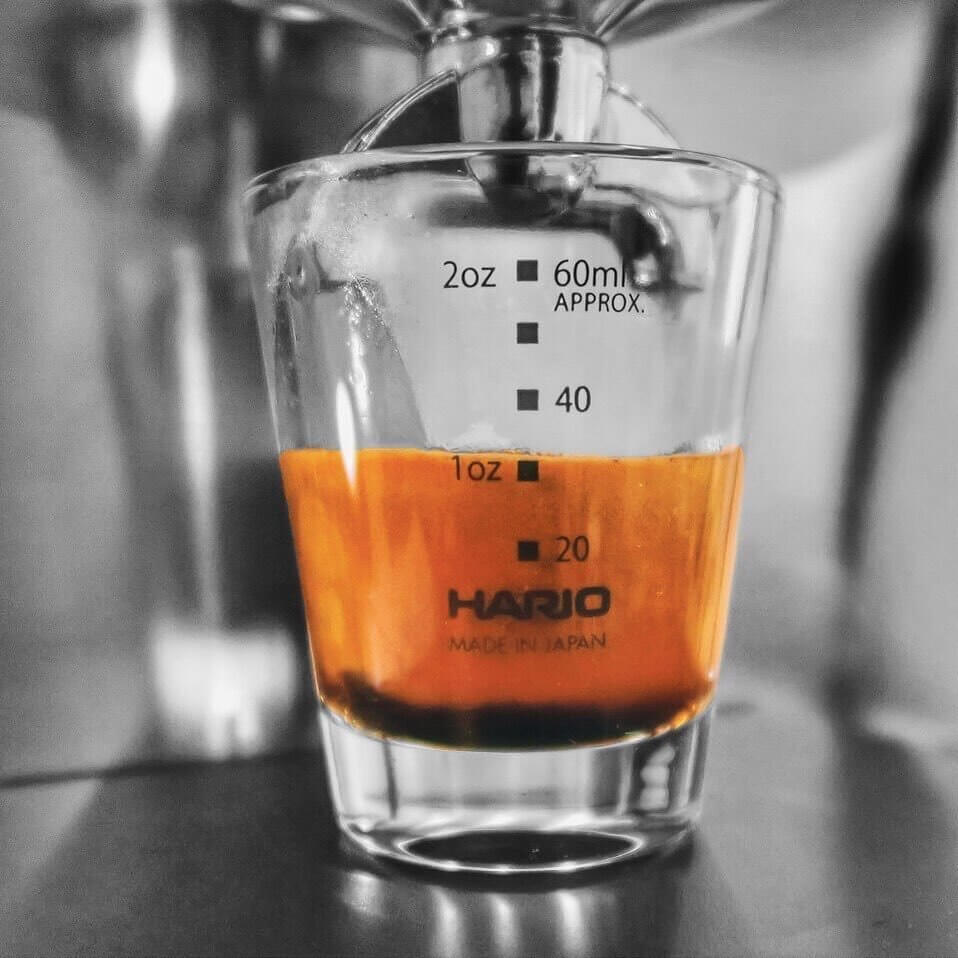
Not everything in a coffee bean can be dissolved, but if you grind your coffee finely, put it in a pot, and boil it for hours, you can dissolve about 30% of what’s in there — the other 70% is the hard, woody structure of the bean and will never dissolve.
But not all of that 30% tastes good; there are nasty flavors hiding even in the best coffee. If you boil your coffee for hours to try and get the whole 30% out of the bean, you will end up with a very bitter and ashy brew. So when we brew coffee, we aim to dissolve as much of the good stuff as possible, without dissolving too much of the bitter, ashy flavors lurking in there.
‘Extraction’ means the amount of coffee you dissolve. If you extract — or dissolve — too much, the coffee tastes dry and bitter. Don’t dissolve enough, though, and you miss out on the good stuff, leaving your coffee tasting weak and sour.
The level of extraction controls the flavor of the coffee.
The importance of brew ratio
In espresso, the most important factor that decides how much you dissolve is the ratio between the amount of coffee and water used — called the brew ratio.
The reason that the brew ratio is so important in espresso is because of the tiny amount of water involved. Think of it like trying to dissolve a teaspoon of sugar in two teaspoons of water: no matter how much you stir, the sugar won’t dissolve completely. Add a bit more water, though, and suddenly the sugar dissolves easily. It’s the same with espresso: if you use a bit more water than you intended, then you dissolve more of the coffee than you intended, and that changes the flavor of the coffee.
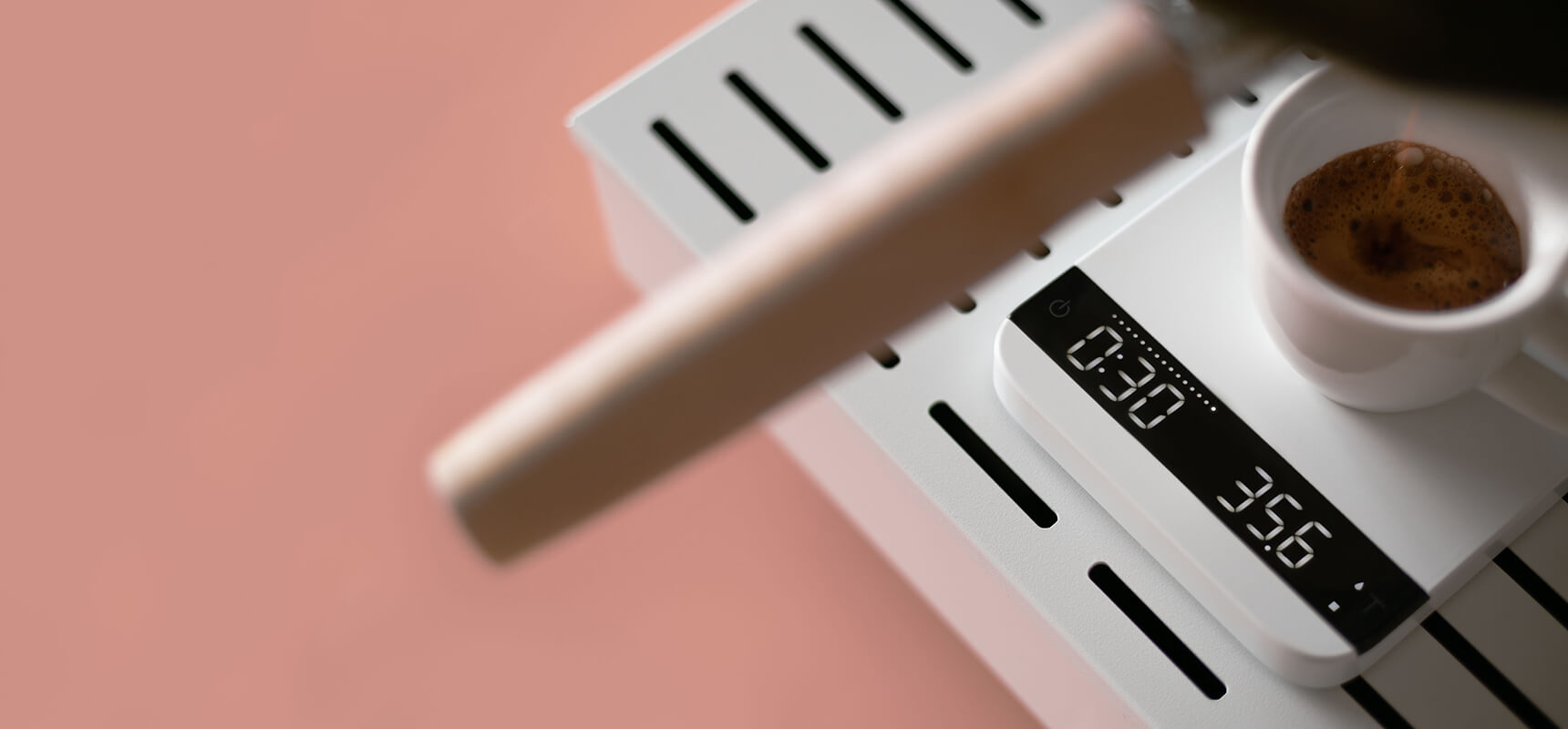
Since the brew ratio is so important to the flavor of espresso, it’s important to measure the amount of coffee and the amount of water in the espresso as accurately as possible — and that is where the scales come in.
Why not use ordinary kitchen scales?
Specialist scales designed for baristas weigh the coffee down to a tenth of a gram, while standard kitchen scales only weigh to the nearest gram.
If you try to use kitchen scales to weigh a double dose of 18 grams, for example, the true weight could actually be anywhere between 17.5 grams and 18.5 grams: a difference of 1 gram. A 1 gram variation in an 18-gram dose is a difference of about 5% — which may not sound like much, but it’s enough to make a difference to the flavor.
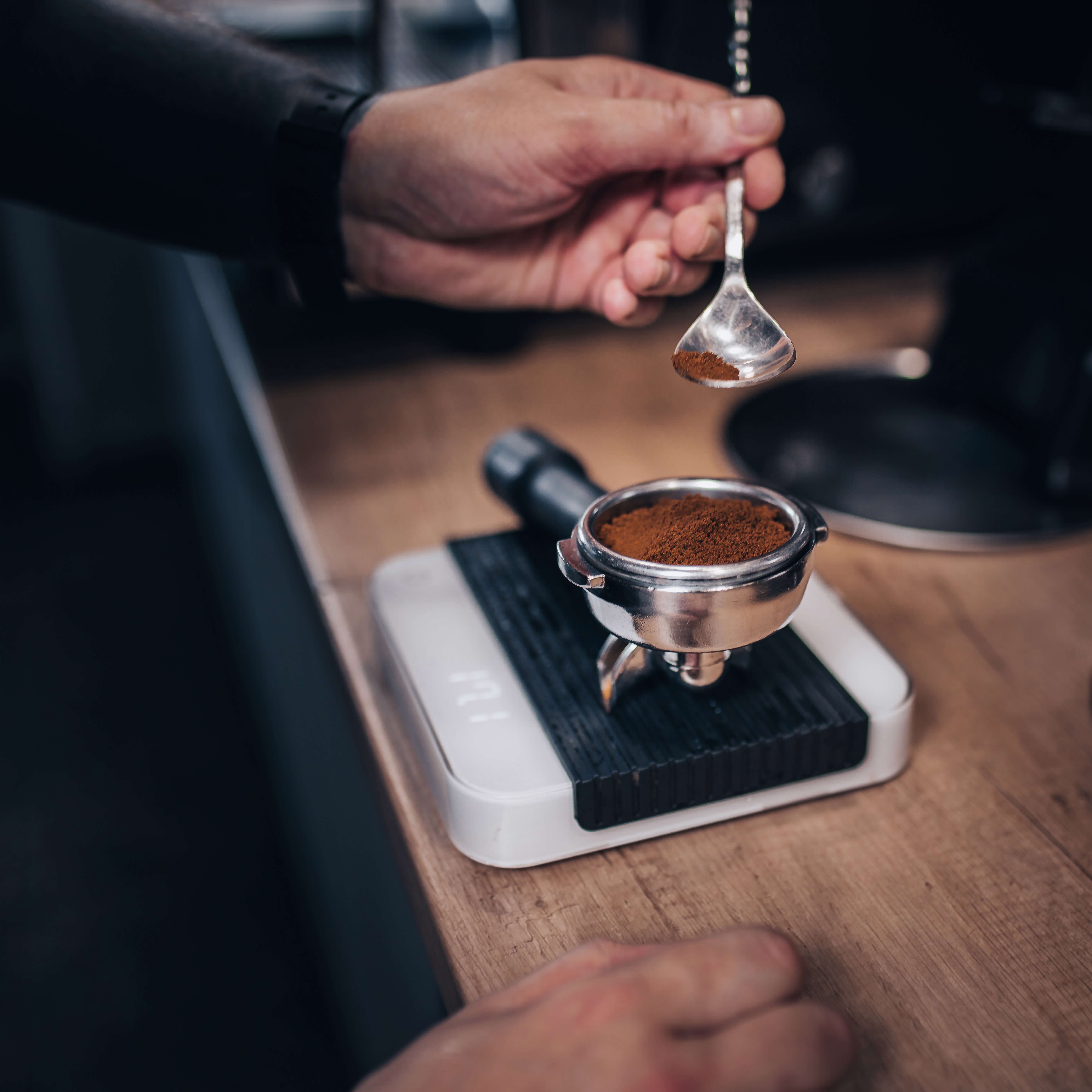
A difference of a gram is also enough to make a noticeable difference to the shot time. If you have more coffee in your portafilter, the water has to travel a longer distance to make its way through the coffee. If you can only weigh to the nearest gram, then some shots will run faster than others.
Using a more accurate scale allows you to be sure your espressos are perfectly consistent.
The other major disadvantage of kitchen scales is that they are not designed to fit on an espresso bar. The ideal scale is just big enough to fit a portafilter but no bigger than necessary. Kitchen scales are often bigger than this or might be an awkward shape that doesn’t fit the portafilter correctly. Most cafes also need a separate small scale that will fit on the drip tray, to measure the amount of liquid that ends up in the espresso cup — typical kitchen scales will not fit into that space.
Why does this only matter for a specialty?
Specialty coffee aims to celebrate and highlight the subtle differences in flavor between coffees. To do this, specialty coffee companies tend to roast the coffee lighter than average.
A lighter roast can highlight the more delicate flavors of a coffee but can require more careful handling than a dark roast.
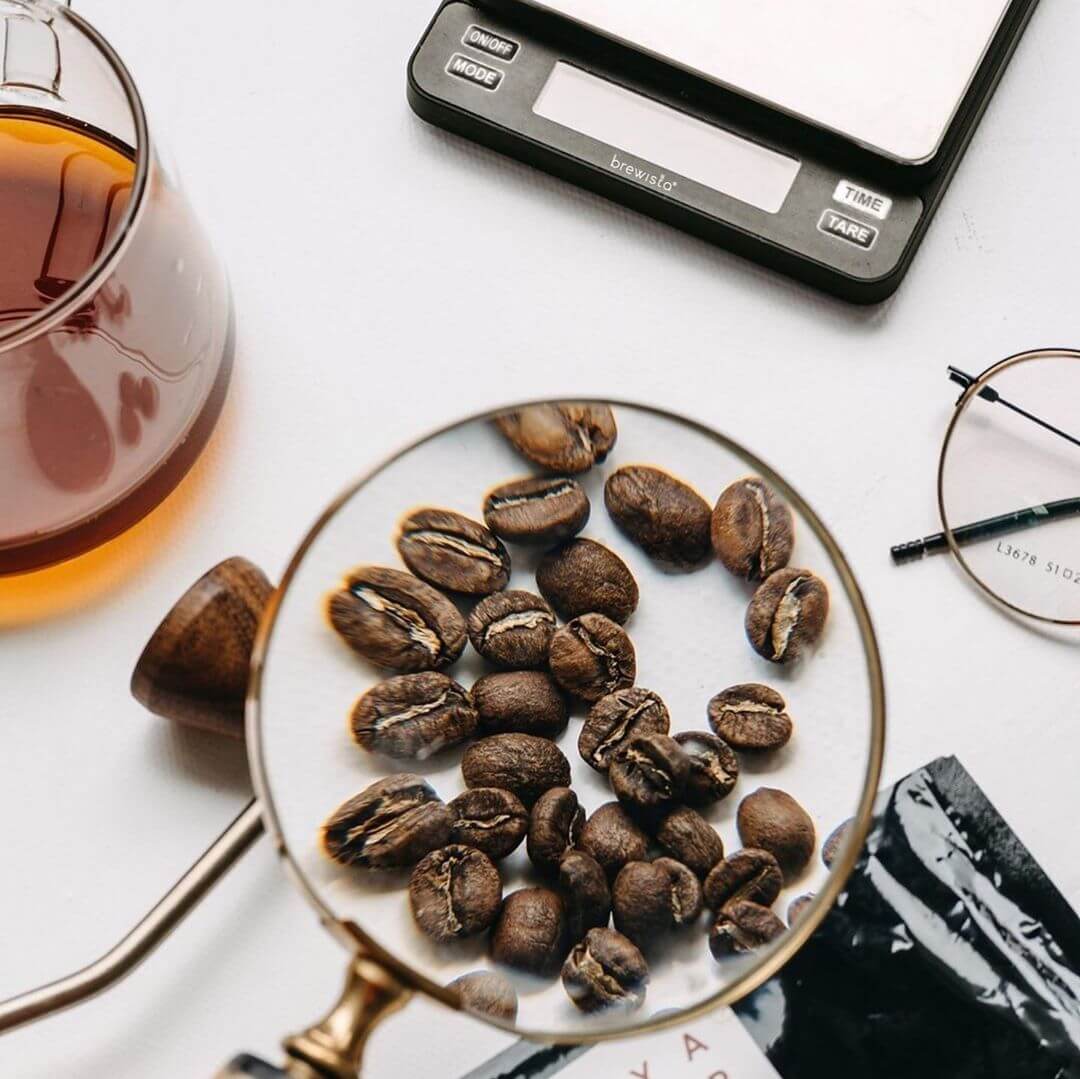
With a darker roast, the more delicate fruity or floral flavors of the coffee are lost, and the more typical roasted-type flavors tend to dominate. Coffee roasted this way is more forgiving to the barista. It will taste more or less like coffee no matter what the barista does, so high precision brewing is less important.
With a lighter roast, the perfect recipe can bring out the more distinctive flavors of the coffee. Get the recipe wrong, however, and the coffee can become undrinkably sour, or harsh and astringent.
With light-roasted specialty coffee, high-precision equipment is essential to get good results.
As the equipment available to baristas has improved, roasters have been able to roast lighter to take advantage of this. As roasts became lighter, high-precision equipment became even more important in turn. This is why scales, which were once a rarity, have become essential in specialty coffee.
What scales should I buy?
The good news is that you don’t have to spend a fortune to get precision scales. It’s possible to buy scales online that are accurate to 0.1g, for less than 100 Rial
Cheap scales sacrifice a certain amount of accuracy and reliability but will do the job for most cafes, so are a great way to get started. They will need to be replaced every so often, though — they tend to break fairly easily, usually either by being dropped or by coming into contact with water, both of which are common hazards in a cafe setting.
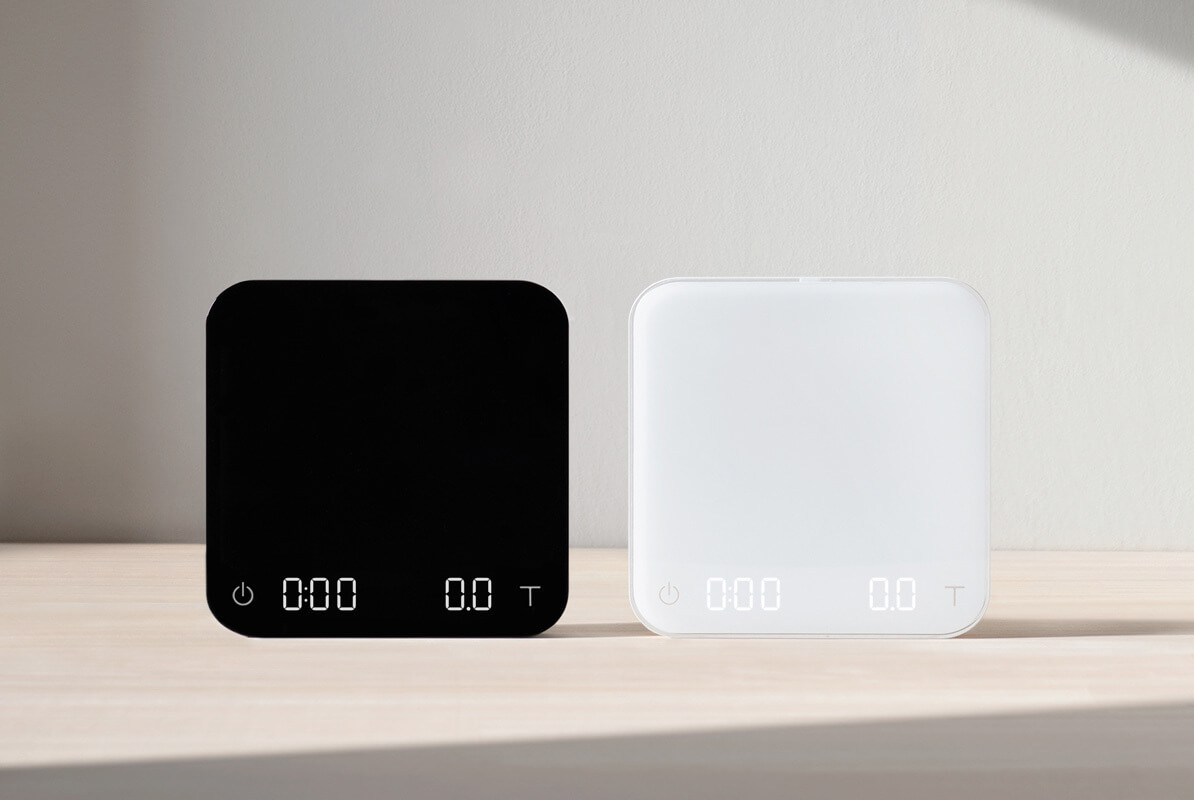
For busier cafes, it’s well worth investing in something sturdier. The Acaia Pearl and Lunar scales were specifically designed for use in coffee brewing. They are very accurate and keep that accuracy over a long period of time. They are built to last and, better yet, designed to be repairable if anything does go wrong. Best of all, they are waterproof — ideal in a cafe, where they are always one false move away from being covered in hot coffee.
The Acaia scales also have some bonus features like Bluetooth connectivity, and apps that help guide your coffee brewing — but in the end, what matters the most is that they will last for a long time, while cheaper scales will need to be replaced regularly.
Acaia scales are a substantial investment, but they will pay for themselves in the long run.
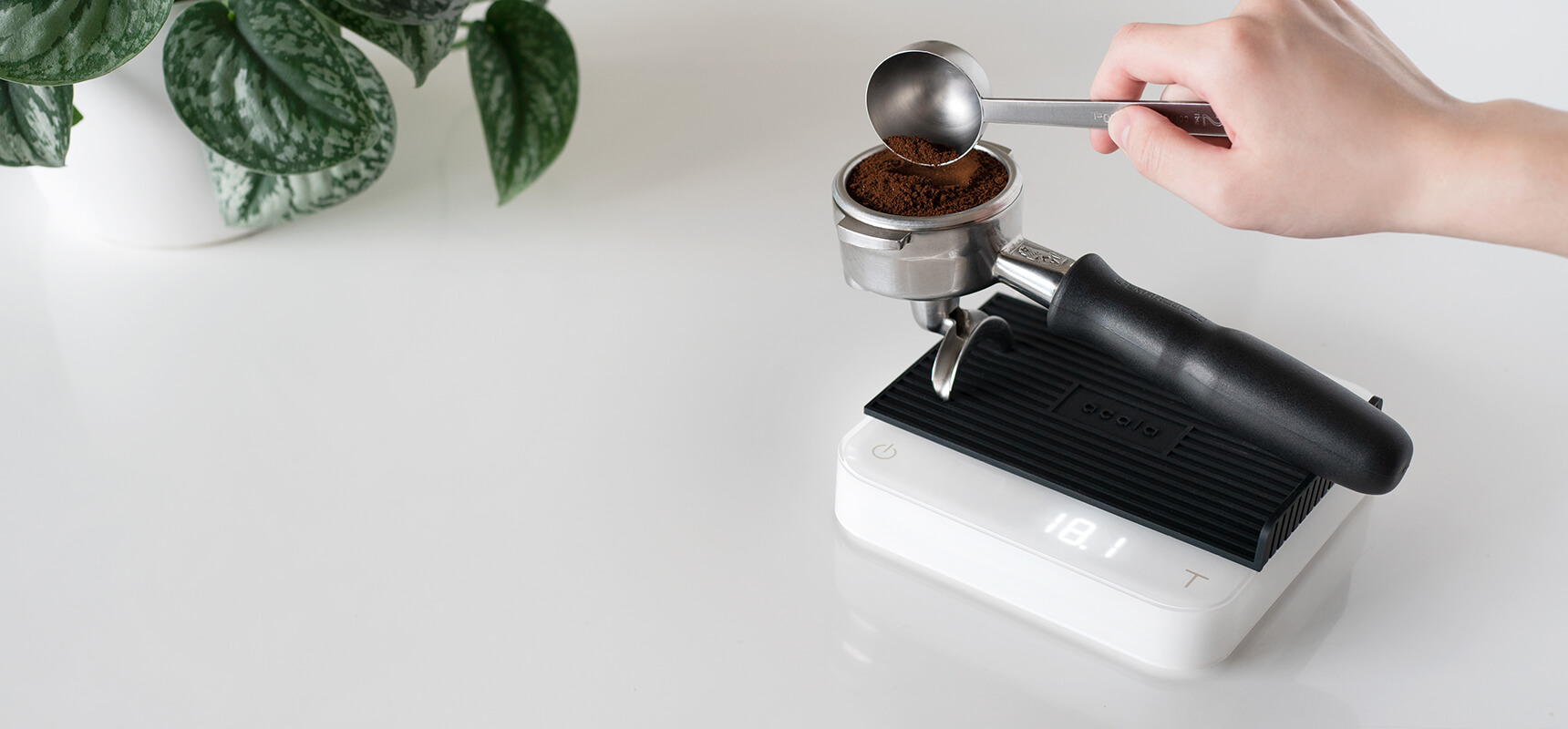
Whether you opt for the Acaia or the budget model, a precision scale is an essential item in any specialty cafe. Weighing the coffee accurately is the only way to consistently get the best flavor out of the coffee, and while the barista may still be an artist, they need to embrace the science of coffee too.
Looking for the high-precision equipment that you need to do your coffee justice?
Contact us for free advice on the full range of coffee equipment and accessories that every specialty cafe needs.
REQUEST FREE CONSULTATION


